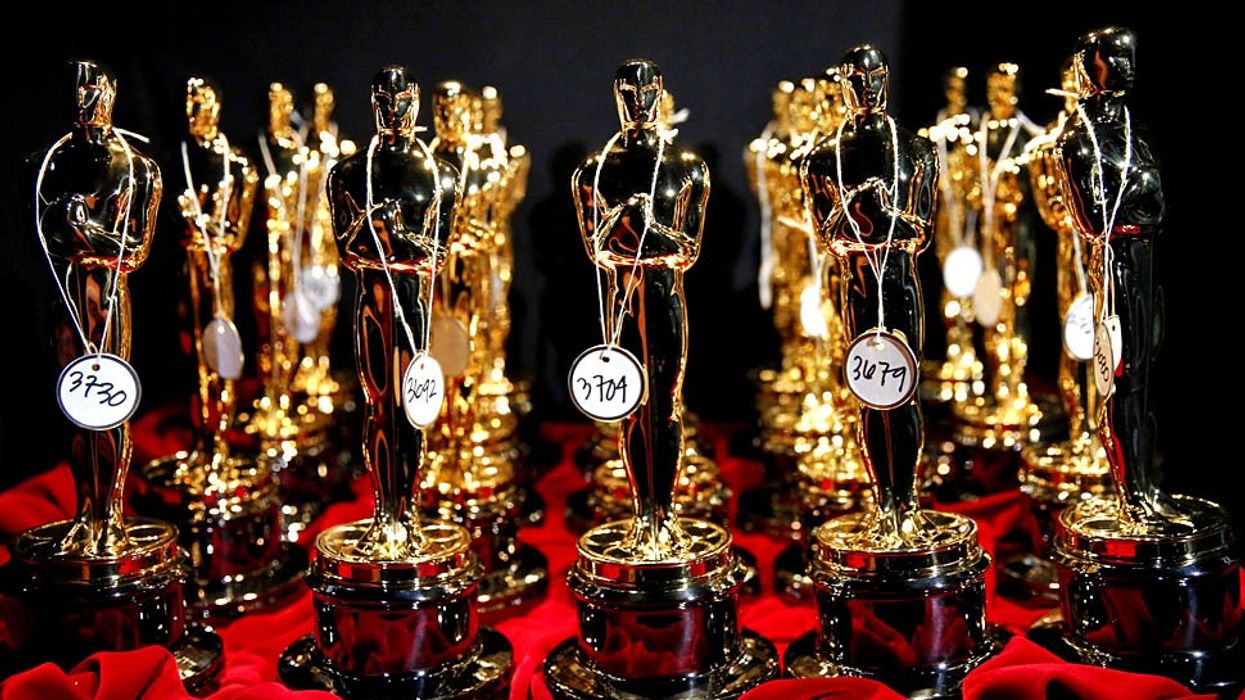Why the Oscars Are Rigged to Pick 'La La Land'
FiveThirtyEight's by-the-numbers breakdown of the Academy voting process reveals why movies like 'La La Land' prevail.

The good data folk at FiveThirtyEight always have a contentious take on the outcome of high-profile political and social events, and the Oscars are no different. Earlier this week, the political aggregation site's chief culture writer, Walt Hickey, confirmed a popular hunch: that the awards show is engineered in favor of movies like La La Land. To understand why, we'll have to take a deep dive into the analytics that drive the Academy Awards machine.
Below, FiveThirtyEight's video shows how names land in those coveted envelopes. Using Moonlight's Mahershala Ali—up for Best Supporting Actor—as an example, Hickey delineates the Academy voting process, noting that Ali had to receive 17% of first-choice votes from the actors in the Academy in order to be nominated.
But when it comes to the win, things get a little more complicated.
In order to win for Best Supporting Actor on Sunday, Ali's performance will have to have garnered more votes than his rivals across the rest of 18 Academy voting branches (actors are the largest, followed by producers and animators), comprised of 6,689 members total.
That's Best Supporting Actor. But how does a film achieve the majority vote for Best Picture? In 2010, the answer to this question changed significantly when the Academy decided to expand the number of Best Picture nominees to more than five films. In doing so, the process was no longer what FiveThirtyEight calls a "first-past-the-post" system, where a film simply needed to amass more votes than the others nominated. This system paved the way for a dark horse outcome; a film could win without majority appeal, as it only needed to have the support of a dedicated minority to prevail.
Post-2010, the Academy's system no longer favors the popular vote. FiveThirtyEight's breakdown explains it as follows:
- Count up all the first-choice votes.
- If a movie gets a majority, that’s the winner. If none does, eliminate the last-place movie from contention.
- Take all of the ballots with the eliminated movie at the top. Reapportion them to each voter’s next preferred movie.
- Go back to step two.
Instead of picking a choice for Best Picture, voters rank them. As FiveThirtyEight notes, the individual ballots are counted with instant runoff voting, which "awards films with broad majority appeal over ones that have strong plurality appeal."
So, let's say most of the Academy thought La La Land was pretty good—not great enough for a first pick, but certainly for a second choice. Under this scenario, La La Land wins the Oscar. It was universally recognized as good, even if it wasn't everyone's actual favorite.
Of course, La La Land is the least controversial Best Picture nominee this year. That's why FiveThirtyEight is sure it's going to win.










![Ethos, Pathos, Logos: 20 Effective Ways to Advertise [Infographic]](https://nofilmschool.com/media-library/ethos-pathos-logos-20-effective-ways-to-advertise-infographic.jpg?id=34064614&width=600&height=600&quality=90&coordinates=560%2C0%2C0%2C0)

